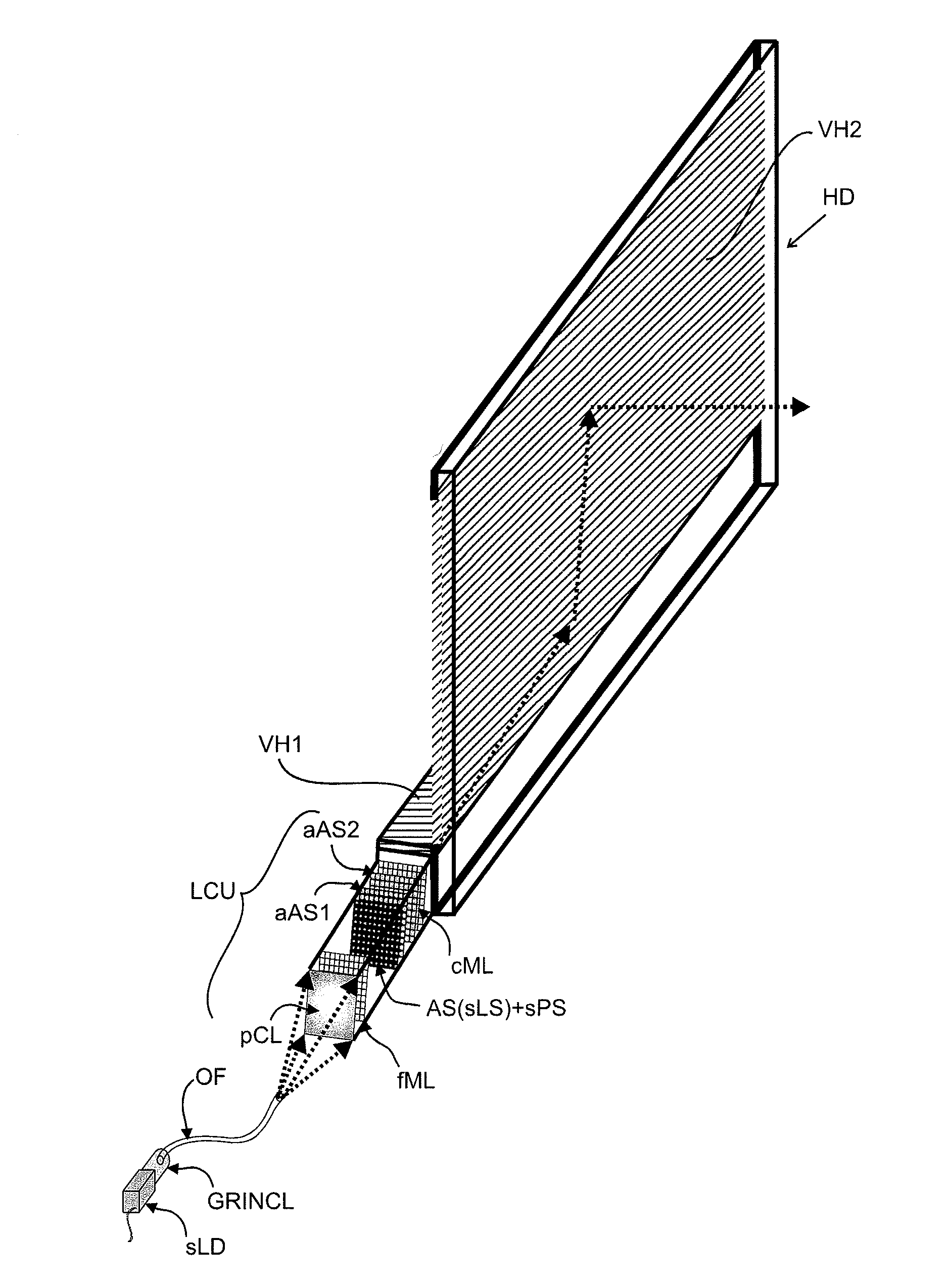Beam divergence and various collimators for holographic or stereoscopic displays
a stereoscopic display and beam divergence technology, applied in the field of holographic displays, can solve the problems of not being able to use the arrangement is still too voluminous to be used as a holographic desktop display, and the problem of only solving the problem of hardly being able to solve the problem of plane wave broadening, so as to prevent the effect of broadening the angular spectrum of plane waves
- Summary
- Abstract
- Description
- Claims
- Application Information
AI Technical Summary
Benefits of technology
Problems solved by technology
Method used
Image
Examples
Embodiment Construction
[0091]FIG. 1 shows an embodiment of an illumination device of the holographic display, said illumination device comprising a light collimation unit in front of two transmissive volume gratings which broaden the light wave field in two different directions one after another. Here, the light collimation unit which comprises two micro-lens arrays preferably has a small size.
[0092]The light wave field is broadened anamorphically, i.e. the enlargement factor differs in the two different directions.
[0093]The light which is emitted by a power-(P)-and-wavelength-(λ)-stabilised laser diode sLD is coupled into an optical fibre OF through a gradient-index lens GRINCL.
[0094]The divergent light which is emitted by the end of the optical fibre is collimated by the light collimation unit, i.e. formed into a plane wave, which means that the rays of light are oriented in parallel through this collimation. The light collimation unit comprises a primary collimation lens pCL.
[0095]The first micro-lens ...
PUM
| Property | Measurement | Unit |
|---|---|---|
| angle of incidence | aaaaa | aaaaa |
| size | aaaaa | aaaaa |
| angle | aaaaa | aaaaa |
Abstract
Description
Claims
Application Information
 Login to View More
Login to View More - R&D
- Intellectual Property
- Life Sciences
- Materials
- Tech Scout
- Unparalleled Data Quality
- Higher Quality Content
- 60% Fewer Hallucinations
Browse by: Latest US Patents, China's latest patents, Technical Efficacy Thesaurus, Application Domain, Technology Topic, Popular Technical Reports.
© 2025 PatSnap. All rights reserved.Legal|Privacy policy|Modern Slavery Act Transparency Statement|Sitemap|About US| Contact US: help@patsnap.com



